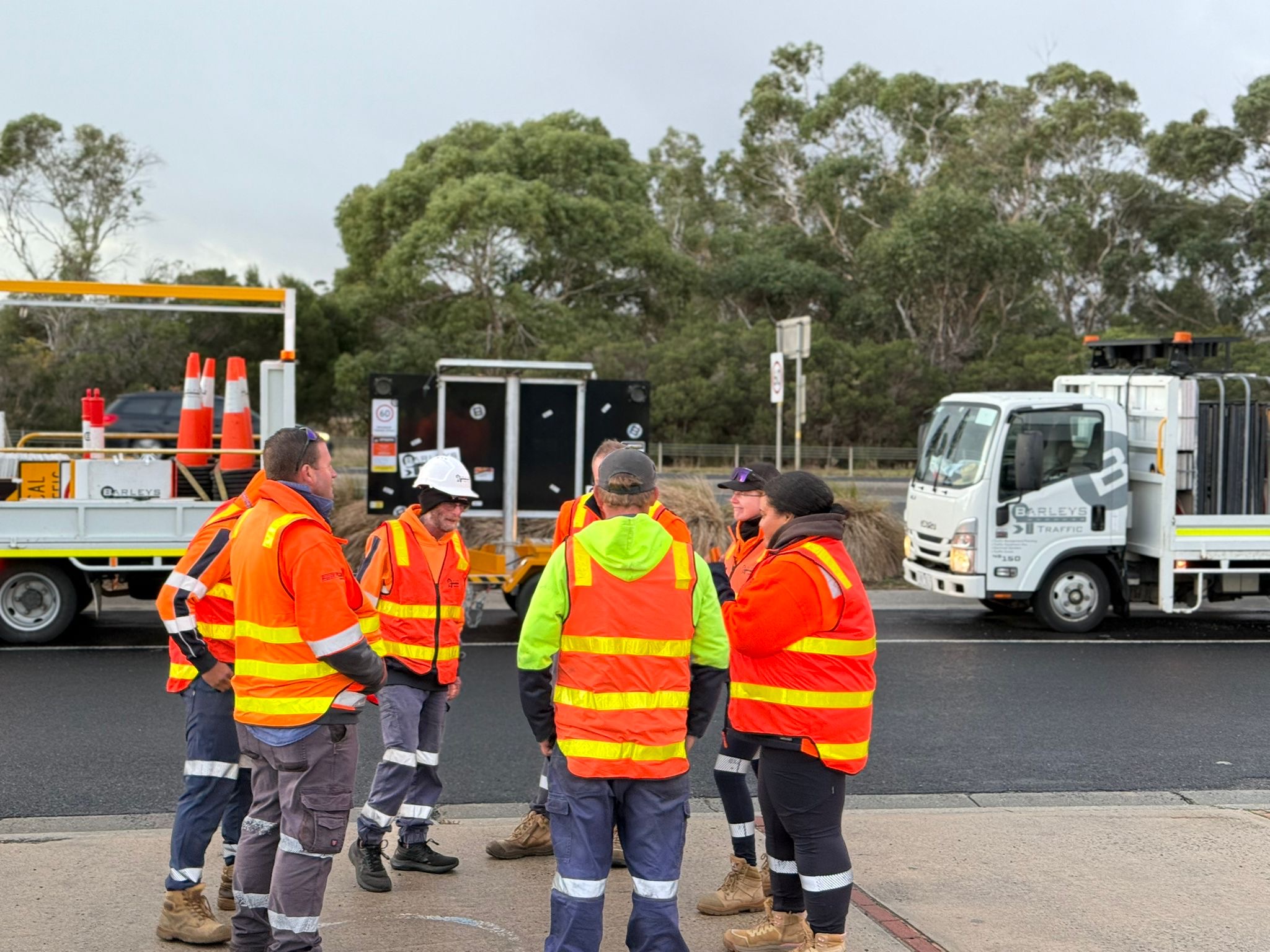How Modern Traffic Controller Training Is Embracing Tech and Realism

Traffic control is one of the most essential aspects of keeping Victoria’s roads safe during construction, emergency response, and special events. Today, Traffic Controller Training is undergoing a much-needed evolution, integrating both cutting-edge technology and realism to better prepare trainees for the complexities of live traffic scenarios.
Barleys Traffic Management Pty Ltd is proud to be at the forefront of this transformation, setting new standards in Victoria for how traffic controllers are trained, assessed, and deployed on site.
Why Traditional Traffic Controller Training Needed a Change
Traditionally, training focused heavily on theory with limited exposure to real-world dynamics. However, managing live traffic involves high-stakes decision-making and the ability to act quickly under pressure.
Modern challenges include:
- Increased urban traffic and road usage: Trainees must learn to manage complex traffic environments with high vehicle density and multiple moving parts.
- A variety of unpredictable driver behaviours: Courses must prepare students for distracted, aggressive, or rule-breaking drivers in real-time situations.
- Emergency response readiness: Trainees need the skills to safely and quickly handle detours and lane closures during emergencies.
- Managing advanced traffic control devices: Today’s work zones often include PTCDs, sensors, and smart signage that require hands-on familiarity.
Without sufficient realism in training, new traffic controllers were often underprepared for the field, compromising not only their safety but also that of the public.
The Role of Technology in Modern Traffic Controller Training
To address these gaps, training providers now utilise advanced technology to simulate real-world scenarios. Here’s how:
- Virtual Reality (VR) Simulations: Allow trainees to engage with realistic worksites without real danger, helping them understand spatial awareness and situational reactions.
- Interactive Learning Modules: Online components let learners study at their own pace while still receiving instant feedback and tracking progress metrics.
- AI-Powered Assessments: Algorithms help evaluate a trainee’s reaction time, accuracy, and decision-making under pressure in simulated environments.
- Portable Training Devices: Trainees can practise with STOP/SLOW bats and PTCDs in controlled conditions, replicating actual site responsibilities.
These technologies allow learners to transition from the classroom to the field much more smoothly, enhancing both competency and confidence.
Maintaining Compliance with Victoria’s Traffic Laws
Any technological enhancement must align with the strict legal requirements under Victoria’s road safety regulations. All Traffic Controller Training must include:
- Mandatory supervised practical experience: Trainees must gain on-site experience under a qualified and accredited traffic controller’s close guidance.
- Medical fitness declarations: All candidates must be physically and mentally fit, as stipulated by Sections 2.3.2 to 2.3.9 of compliance requirements.
- Adherence to the National Training Framework (NTF): From 1 March 2024, training must align with the NTF for Traffic Controllers (TC) and Traffic Management Implementers (TMI).
These measures ensure that every certified controller is not only trained to perform, but fit to respond efficiently in real-world traffic control duties.
Emphasis on Realism: Learning on the Job
Barleys understands the importance of realism in preparing future traffic controllers. That’s why all trainees must:
- Gain at least 20 hours of on-road experience: This experience must be completed within six months of finishing the theory component of the course.
- Operate under direct and close supervision: Trainees are only permitted to control traffic when an accredited supervisor is nearby and able to intervene.
- Demonstrate competence with STOP/SLOW bats and PTCDs: This must be done during live traffic conditions, under real-time pressures.
This approach ensures that safety remains paramount. Supervisors are required to intervene if a trainee is not performing competently or if real-time decisions need to be made.
Barleys’ Unique Approach to Traffic Controller Training
Barleys doesn’t just follow the rules; we elevate the standard. Here’s how:
- Professional Crews: Our training is delivered by accredited professionals who bring hands-on knowledge from real traffic control experience.
- Advanced Equipment: From VR gear to modern PTCDs, we provide access to tools that mirror today’s industry standards.
Why Choose Barleys for Your Traffic Controller Training?
Choosing Barleys means aligning with a provider who prioritises safety, compliance, and excellence. Our commitment to delivering quality Traffic Controller Training includes:
- We deliver training that not only meets but exceeds Victoria’s current legal and regulatory requirements.
- Every trainee leaves our program with tangible experience, equipping them to handle real-world conditions confidently.
- We are a Registered Training Organisations (RTO) ensuring our courses are nationally recognised and respected.
- We ensure supervisors are focused solely on mentoring trainees without distraction from unrelated work duties.
- We build every training session with safety-first principles that reflect the core of Victoria’s traffic control regulations.
The Future of Traffic Management Starts with Better Training
Modern Traffic Controller Training isn’t just about passing an assessment. It’s about creating competent, confident, and compliant professionals who uphold safety on Victoria’s roads.
Barleys Traffic Management Pty Ltd is proud to be leading this charge through innovative training programs that blend technology, realism, and legal compliance.
Let us help you or your team take the next step toward becoming industry-ready traffic controllers. Visit Barleys’ training service page to start your journey today.
